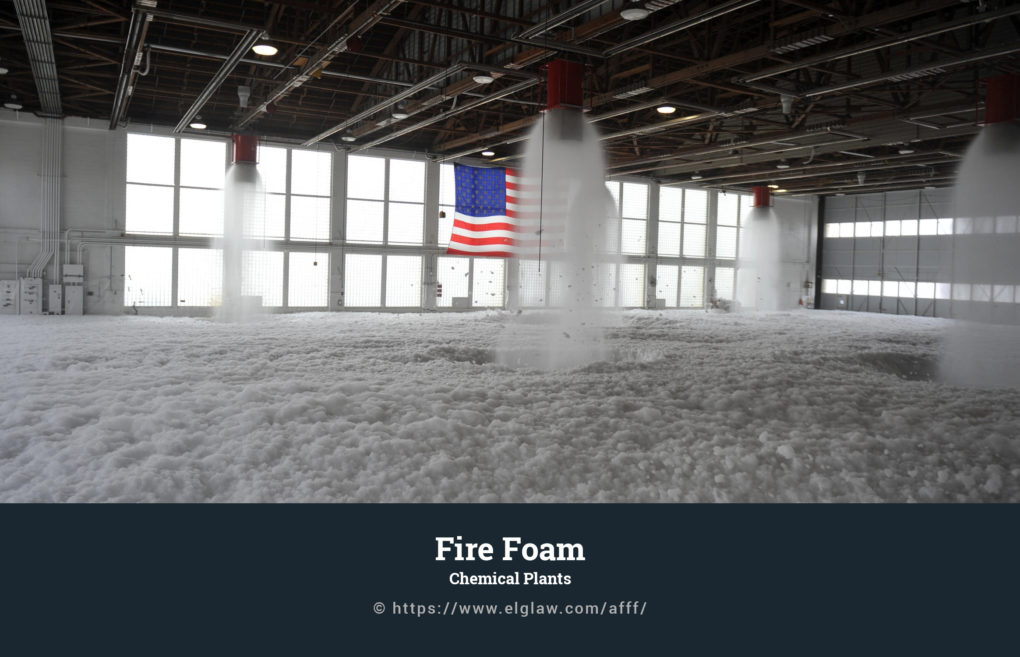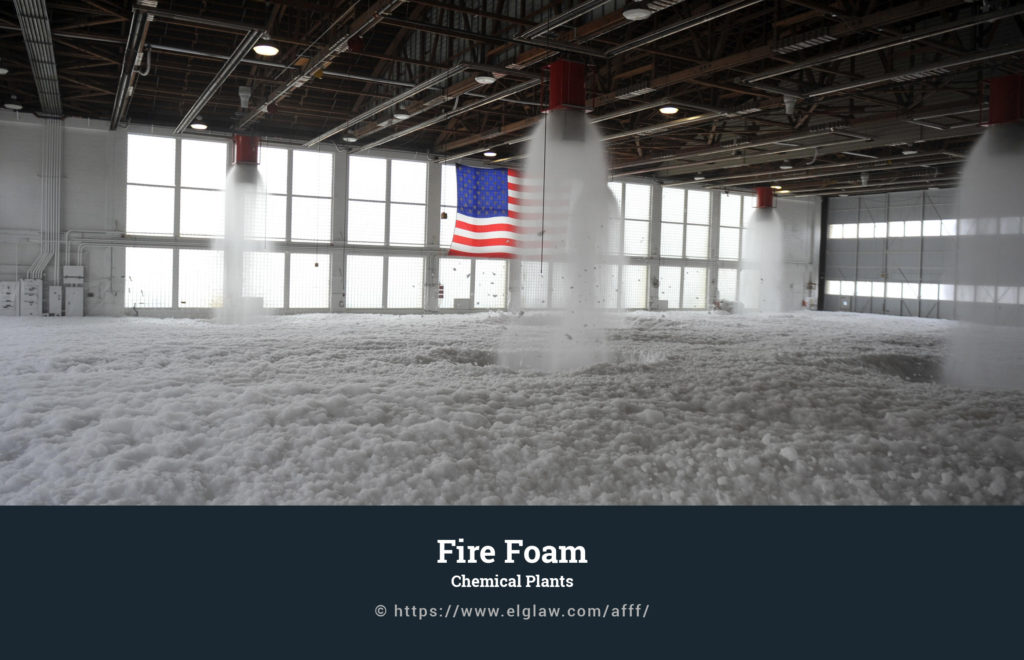The Firefighting Foam Paradox — When Savior Equipment Becomes Harmful (Updated)
In the ’60s, the U.S. Navy started to develop alongside 3M a type of fire suppressant foam that could contain fuel fires such as those that could happen in airport hangars and other military facilities. Starting the early ’70s, the foam has been used on hundreds of bases across the country not only to put out emergency fire hazards but also to contain fires set on purpose during firefighter training. But despite its effectiveness, numerous studies conducted over the last decades have concluded something that is now forming an almost incredible paradox – the foam that was created to keep people safe, is actually now harming millions of Americans and especially those who have used it as “savior equipment” – firefighters.
The firefighter foam contains PFAS, a group of man-made chemicals that have been discovered to be extremely persistent in the environment and the human body. These chemicals are soluble in water which offers them the ability to move easily through water and soil, ultimately contaminating even food. Out of the group, two types of PFAS have been categorized as being potentially carcinogenic – PFOS and PFOA. It is important to note that over 4000 PFAS have been manufactured throughout the years with hundreds of them being detected in environmental samples. While areas next to military bases, airports and firefighting training facilities are still discovering contaminated water sites as a consequence of AFFF use, the evidence regarding the health risks associated with PFAS exposure is piling up and becoming more and more incontestable.
Widget not in any sidebars
The Evidence Against PFAS
The extent of the contamination with PFAS chemicals became known after high levels of PFOA and PFOS were detected in drinking water near military bases, between 2013 and 2015 when the EPA has started conducting tests. The major sources of contamination come from production, use, and unregulated disposal of PFAS at military fire training sites, airports, and manufacturing sites. As a consequence, firefighters and workers who have come directly in contact with these chemicals, as well as communities living near these areas are more likely to have high concentrations of these chemicals in their blood than the general population.
Scientific studies around PFAS exposure have greatly increased in the last decade, resulting in a better understanding of the potential health risks associated with it. Several epidemiological studies have associated this type of toxic exposure with kidney and testicular cancer, thyroid diseases, asthma, and a decrease in immune function and vaccine response. Additionally, animal studies have found that PFOS and PFOAs can cause pancreatic and liver tumors and a potential delay in the development of a fetus. The particular concern regarding the health risks associated with exposure to these chemicals is augmented by the fact that they cannot easily be eliminated from the body and can remain long after the exposure ends.
Some of the tests conducted on animals have also noted that PFAS chemicals have a very rapid rate of absorption. In rats, it has been observed that if ingested, the absorption rate was less than two hours. It is not yet clear how fast they are absorbed through skin contact or inhalation, but taking into consideration the fact that firefighters have had prolonged exposure to higher amounts than the general population, it becomes pretty clear that for them, the risks of developing one of the diseases mentioned above are much higher.
In 2018, the CDC released a controversial review of the toxicity of PFAS chemicals and the health risks that can arise as a consequence of exposure. The review contradicts the recommended limits set by the EPA, arguing that it should be 10 times lower in order to be deemed safe for human health. Overall, this report suggests that these chemicals could be far more dangerous than thought before. With evidence of contamination mounting, we cannot help but wonder just how dangerous other PFAS chemicals could be, considering the fact that the CDC report and the majority of studies available until this point, only address a fraction of the compounds, specifically PFOS and PFOAs and there are new ones that are being constantly produced in order to replace the old ones. Although epidemiological studies are still ongoing, the collective data gathered until now points to the clear fact that PFAS exposure represents a real risk for human health.
The Blame, The Victims and The Lawsuits
The consequences for years of using PFAS chemicals in firefighter foam and dumping waste into the soil have been devastating on a human level, with many Americans developing serious diseases. In the future, there could be even more considering the fact that only recently manufacturers have started taking steps in order to eliminate them as well as the Military to replace the old foam. But these measures have only come as a result of a wave of lawsuits.
With communities that live near these facilities suffering significant damages in health, properties, and natural resources, as well as with the rising number of former firefighters developing various types of cancer, especially kidney and testicular, several states have filed lawsuits against PFAS manufacturers DuPont, Chemours, and 3M. The lawsuits are focused on the impacts that the exposure to these chemicals has had on human health and on the environment, backed up not only by the personal experience of victims but also by the emerging evidence that has been gathering for a couple of years now, which not only legitimizes the claims that these chemicals are a health hazard but also that companies have concealed information regarding the adverse effects.
Taken by storm with numerous lawsuits, DuPont, 3M, and Chemours have had no choice but to settle, with 3M even reaching a historic high of $850 million settlement with Minnesota. This doesn’t mean that they are still not aggressively fighting the liability claims and even more, the regulations and legislation regarding the use of PFAS. This is because by imposing stricter legislation, analysts suggest that they stand to lose as much as 40 billion through implementing remediation projects, improving filtration systems, and modifying the process of production.
The firefighting foam lawsuits are also starting to mount rapidly against 3M, DuPont, and all other companies that have produced it. In 2018, 3M’s request for dismissal of a lawsuit filed by an Ohio firefighter was declined by a federal judge, moving forward with the request that the culprit companies compensate firefighters who have fallen ill due to AFFF exposure.
When All Is Said, What’s Being Done?
What’s being done to fix the issue of PFAS contamination and exposure is a delicate area. While things seem to be moving in a good direction, with the EPA setting a health advisory limit, regulations being discussed, the Military replacing old foam and manufacturers developing alternatives, it’s certainly not enough. And the biggest issue is that replacement chemicals, as well as the types of PFAS that have not been yet studied, still might still pose a health risk.
Despite the fact that former firefighters are now falling ill due to occupational exposure to AFFF, there is still no enforceable federal PFAS limit. The current health advisory set by the EPA stands at 70 parts per trillion which is arguably still a higher limit than it would be safe for human health. In what concerns 3M, they have voluntarily phased out PFOS and PFOA while DuPont has committed to eliminating PFAS altogether. While we are still waiting for a solution to clean up contaminated sites, the question still remains: are the replacement chemicals actually safer?
About The Author
Gregory A. Cade is the main attorney at Environmental Litigation Group P.C, where he has dedicated over two decades to helping victims that have been affected by PFAS exposure through firefighting foam, specifically those who have been occupationally exposed to it. Additionally, he is highly involved in helping the Alabama community fight toxic exposure.
FREE PDF: 10 Best Books To Survive Food Shortages & Famines




